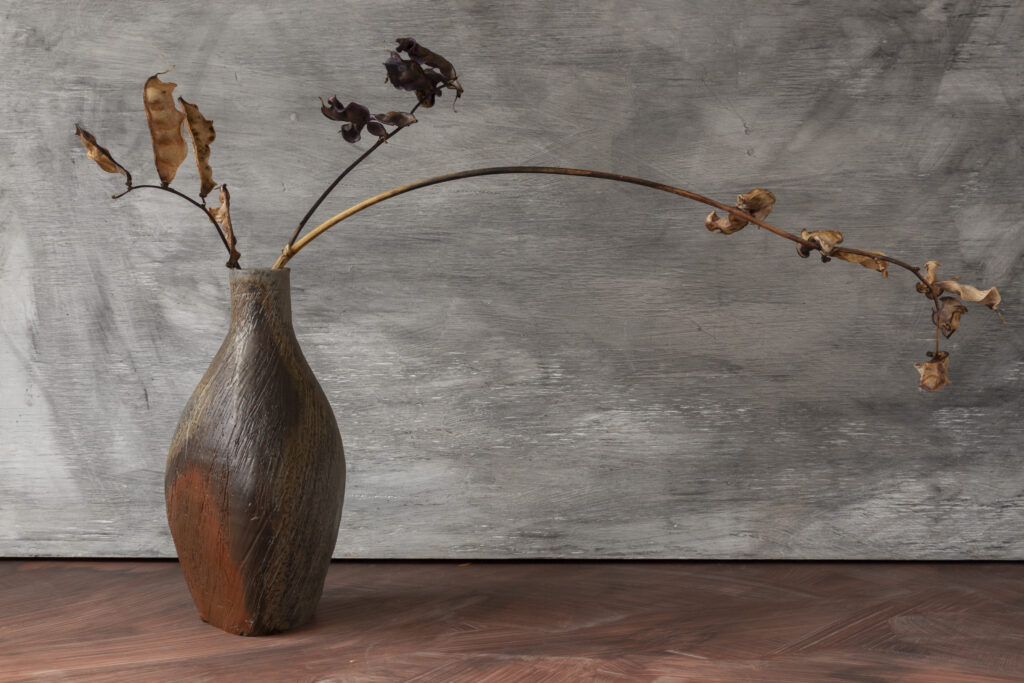Today I gave a Zoom talk in conjunction with my exhibit at Steven Harvey Fine Arts Projects in NYC. I wanted to keep my focus on the shadowy qualities of my woodfired work. But Steven brought up a momentary focus on blue. Mikio had visited my studio when I was working on black glaze tests. He saw a small bowl that had come out with a deep blue as dense as gravity. Mikio lit up like the full moon when he stumbled upon it. “This is what I want!,” he exclaimed. I tried to dissuade him, believing that blue is such a cliche in ceramics, but he convinced me to make him a series of shallow bowls. Despite my fears, the deep blue with soft concentric ridges sparkled in the dark restaurant like it was the heart of night. They were used at first with a white sashimi sliced so thin you could see the color of the glaze through the fish. In a later incarnation of gentle contrast they were used to serve fresh fruit for dessert.

“What does the heart of night have to say? It dares you to enter its perilous uncertainty. I used to fear that below the shadows were more shadows, a dark so dense its gravity, at some point, would grow inescapable. (It was for Pizarnik, who swallowed a handful of Seconal, a pill to treat insomnia, and went to sleep forever.) But the moon opens the night jar of the heart and inside, beneath the layers of fear and shame, lives another form of light. It does not glow like moonlight and it does not shine like sunlight. It is like no light any of us have seen with our eyes, a light like bells. When the moon draws out the shadows it can guide us to this light in the darkest center, in every heart pulse and in every pause that breaks the eternity of a sleepless night. There it is, this light, and it is—can I say it? Why this shame? This light, brave animal, can I say it? It’s love.”
–Nina MacLaughlin from Long Night Moon, The Paris Review, 12/17/2021